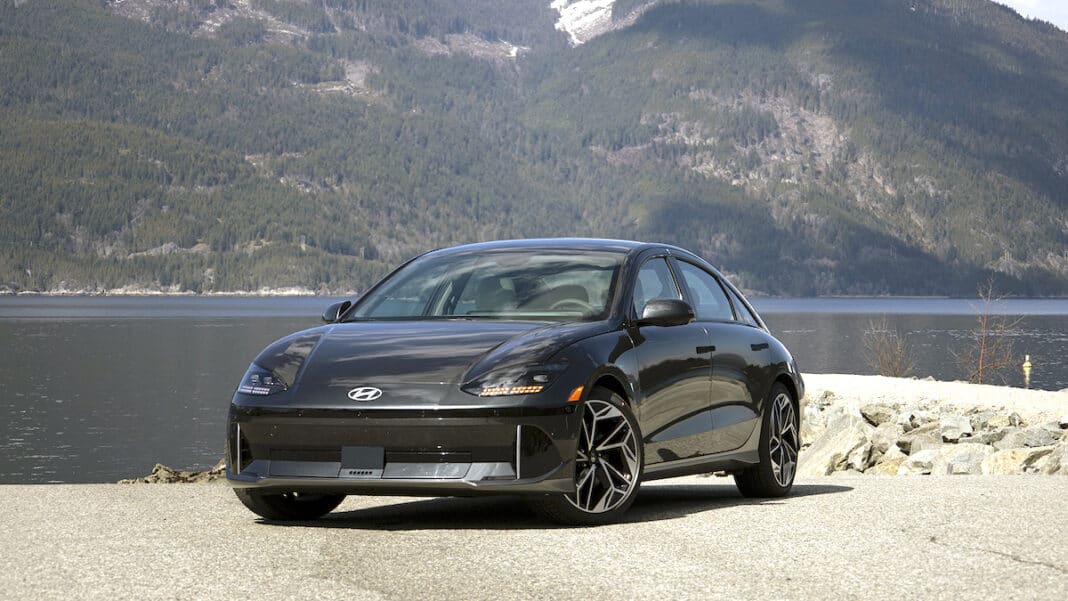Vancouver, BC – Although some carmakers have recently dished out compelling compact electric sedans, the harsh reality is that the Tesla Model 3 is still alone on its rock. Consumers adore the Model 3 for its competitive range, robust charging infrastructure, impressive energy efficiency and, well, availability and aggressive pricing.
Here’s our full 2023 Model 3 review.
As an automotive journalist, I find it at times funny to read the headlines of some of my colleagues when they’re reviewing a new electric vehicle. Many have claimed that the new “not a Tesla” model is finally here to steal Elon Musk’s lunch money. A “Tesla killer’, if you will, only to find out that, no, that said model doesn’t come even close.
But now that we’ve just spent a bit of time driving the 2023 Hyundai IONIQ 6 during its Canadian launch in Vancouver, we feel the Model 3 could potentially have met its match.
Form Follows Function Design
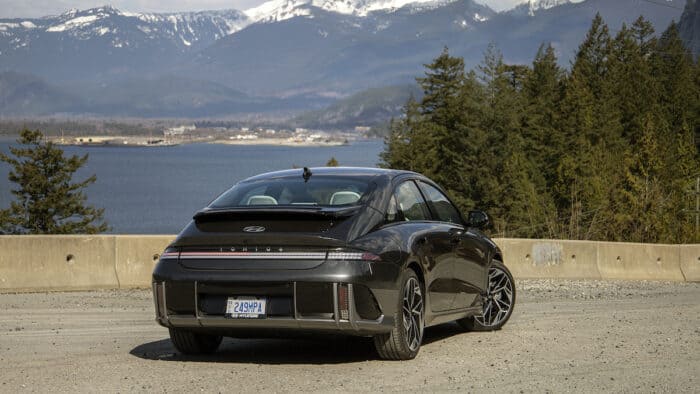
If you have an opinion about the IONIQ 6’s drooping design that looks like a banana from the side profile, an old Saab 900 from the rear and a vehicle out of the movie Demolition Man from the front, it’s irrelevant.
That’s because this car’s design wasn’t penned out of taste nor desire, but rather out of necessity. Its classic form follows function design in the sense that Hyundai designers worked overtime to lower the car’s drag coefficient (Cx) to ration as much range as possible.
The end result is an industry leading Cx of 0.22. In its home market of South Korea, the IONIQ 6 is even more streamlined thanks to cameras that act as side mirrors, dropping that Cx down to an astonishing 0.21.
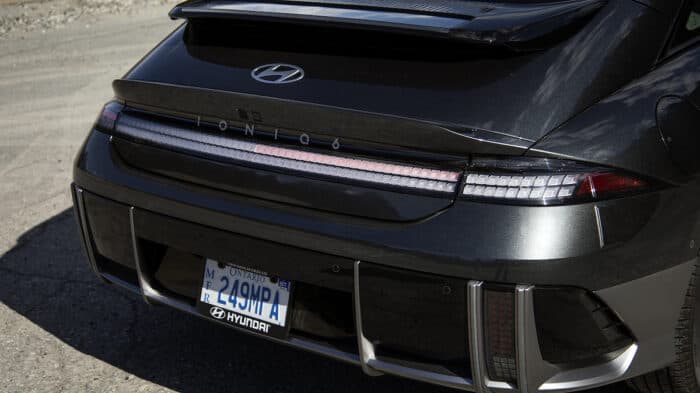
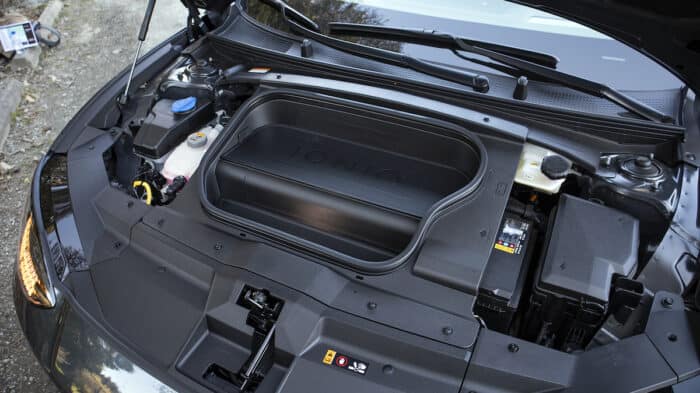
IONIQ 6 Range and Charging
Such aerodynamic obsession paid off, because although the IONIQ 6 is powered by the same 77.4-kWh usable battery as the retro-looking IONIQ 5 hatchback, it pulls considerably better real-world range.
For instance, in its most basic form, powered by one electric motor installed on the rear axle (225 hp/258 lb-ft), the IONIQ 6 is EPA-rated at 361 miles (581 kilometers). That’s not only the highest range for an electric vehicle in this price bracket (from $54,999 to $63,999$ CAN before incentives), but it also pulverizes a Tesla Model 3, which is now rated at 272 miles (438 kilometers).
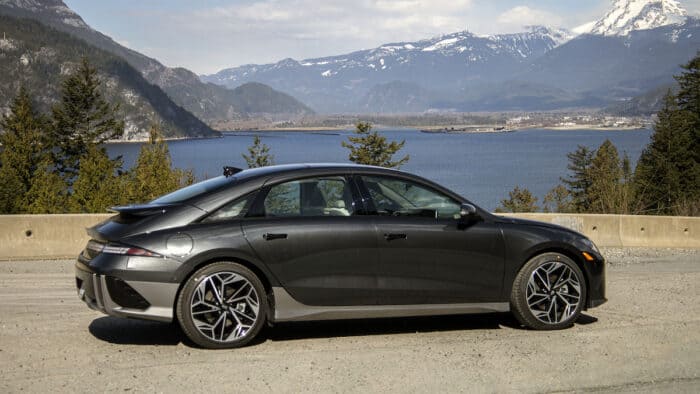
What’s also cool about the IONIQ 6 is that no matter which version you opt for, you’ll still be getting great range. Adding a second electric motor for all-wheel drive drops things down to a still impressive 316 miles (509 kilometers), while the addition of 20-inch wheels – as tested – puts you puts things at 270 miles (435 kilometers).
Smooth, quiet, and incredibly efficient
The IONIQ 6 isn’t a sport sedan, meaning it’s never as focused nor fun to throw around on a twisty road as its main rival from Tesla. But out there on beautiful British Columbia roads, at an ambient temperature of about 12 degrees Celsius, Hyundai’s latest electric sedan proved to be all grown up, smooth and tremendously refined.
…we did experience some connection issues with Android Auto. We were also disappointed by the IONIQ 6’s high seating position for the driver’s seat.
During highway cruising, wind noise was all but nonexistent, while Hyundai’s semi-autonomous technology was both effective and non-intrusive. Occasional stabs at the throttle pedal yielded swift and enthusiastic acceleration, while the three-mode regenerative braking, complete with i-Pedal one pedal driving technology proved handy during descents.
Just like the IONIQ 5, the IONIQ 6 is mostly operated via a massive digital dashboard display which regroups both the car’s readouts and infotainment system. The entire layout is generally easy to comprehend, quick to react and graphically pleasing, but we did experience some connection issues with Android Auto. We were also disappointed by the IONIQ 6’s high seating position for the driver’s seat. If you’re a tall driver, that might be a deal breaker for you.


And although rear leg and head clearance is surprisingly ample in this car, even with such an aggressively raked roof line, total cargo space is nowhere near what you’ll get from a Model 3.
At the end of the trip, which totalled a bit more than 155 miles (250 kilometers), the onboard computer indicated a real-world energy consumption of 17.4 kWh/100 km. This translates to a theoretical range of 445 kilometers, a bit more than what Hyundai advertises. Now imagine what the rear-wheel drive car can do.
Takeaway: is Hyundai’s EV sedan worth it?
So, while it’s far from perfect, the 2023 Hyundai IONIQ 6 has a lot going for it, challenging Tesla in energy efficiency, range and, perhaps most importantly, build quality.
But there’s still one area where Hyundai is lagging: availability. In a world where a Model 3 can be delivered within a month, Hyundai’s sleek sedan could take six months to almost a year to be delivered.
And perhaps even longer. If the Korean giant can find a way to overcome its supply chain issues, then yes, it could have what it takes to finally give the Model 3 a run for its money.

